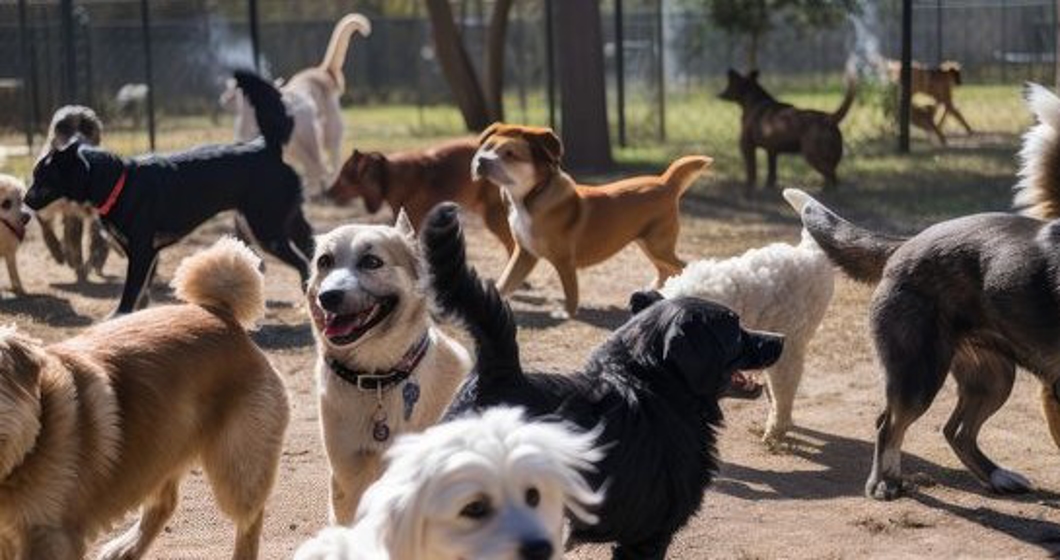Dog parks provide wonderful opportunities for dogs to socialize, exercise, and have fun off-leash. However, ensuring your furry friend's safety while at the dog park is paramount. In Westmont, IL, where numerous dog parks offer recreational spaces for pets and their owners, knowing how to keep your dog safe is essential. In this blog, we'll explore valuable tips and strategies for ensuring your dog's safety and well-being while enjoying the amenities of the local dog parks.
- Familiarize yourself with park rules: Before visiting a dog park in Westmont, IL, take the time to familiarize yourself with the park's rules and regulations. Each park may have different guidelines regarding leash requirements, vaccination requirements, and behavior expectations for dogs and their owners. Understanding and adhering to these rules helps create a safe and enjoyable environment for all visitors.
- Vaccinate your dog: Ensure that your dog is up-to-date on vaccinations, including rabies, distemper, and parvovirus. Vaccinations protect your dog from potentially harmful diseases and reduce the risk of transmission to other dogs at the park. Regular veterinary check-ups and vaccinations are essential for maintaining your dog's overall health and well-being.
- Supervise your dog: Always supervise your dog while at the dog park. Pay close attention to their interactions with other dogs and intervene if necessary to prevent conflicts or aggressive behavior. Additionally, keep an eye on your dog's behavior and well-being, as they may encounter hazards such as toxic plants, sharp objects, or aggressive dogs.
- Use a leash in entry and exit areas: When entering or exiting the dog park, use a leash to ensure that your dog remains under control. Entry and exit areas can be chaotic, with multiple dogs entering and leaving simultaneously. Keeping your dog leashed during these times helps prevent accidents and ensures their safety in potentially crowded areas.
- Know your dog's limits: Be aware of your dog's physical limitations and temperament. Some dogs may become overwhelmed or anxious in large social settings, while others may exhibit signs of aggression or fear. If your dog shows signs of distress or discomfort, such as excessive panting, cowering, or growling, consider removing them from the park and providing a calmer environment.
- Provide adequate hydration: Bring plenty of fresh water for your dog to drink while at the dog park. Hydration is essential, especially during hot weather, to prevent dehydration and overheating. Offer water regularly and encourage your dog to take frequent breaks from play to drink and rest.
- Clean up after your dog: Practice responsible pet ownership by cleaning up after your dog's waste. Carry waste bags with you and promptly dispose of any feces in designated receptacles. Not only does this help maintain a clean and hygienic environment for all park users, but it also prevents the spread of disease and contamination.
- Monitor weather conditions: Keep an eye on weather forecasts and avoid visiting the dog park during extreme weather conditions, such as high temperatures, thunderstorms, or icy conditions. Hot pavement can burn your dog's paw pads, while thunderstorms and lightning pose significant safety risks. It's best to err on the side of caution and reschedule your visit for a more suitable time.
- Train your dog: Invest time in training your dog to respond to basic commands such as "sit," "stay," and "come." Training improves your dog's obedience and enhances their safety while at the dog park. A well-trained dog is less likely to engage in problematic behaviors or wander off unsupervised.
- Stay alert and be prepared: Remain vigilant and attentive to your surroundings while at the dog park. Be prepared to respond quickly in case of emergencies, such as dog fights, injuries, or medical emergencies. Carry a basic first aid kit for pets and know how to administer basic first aid if needed.


